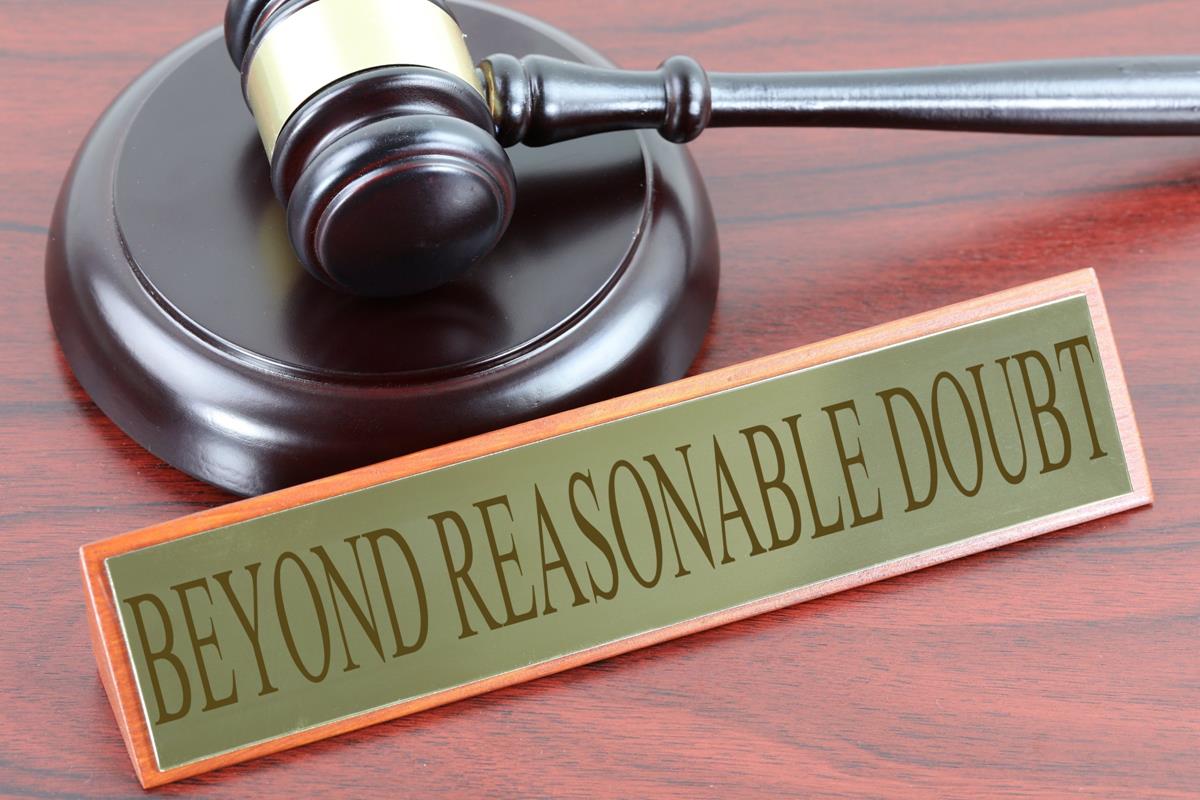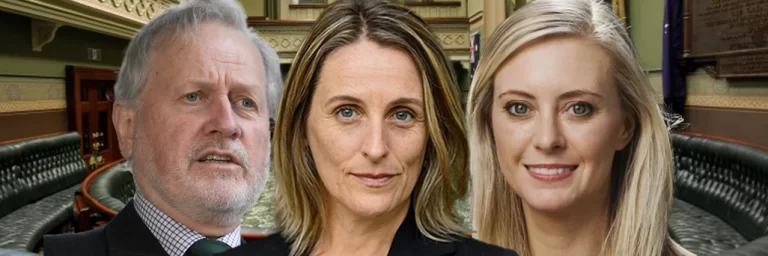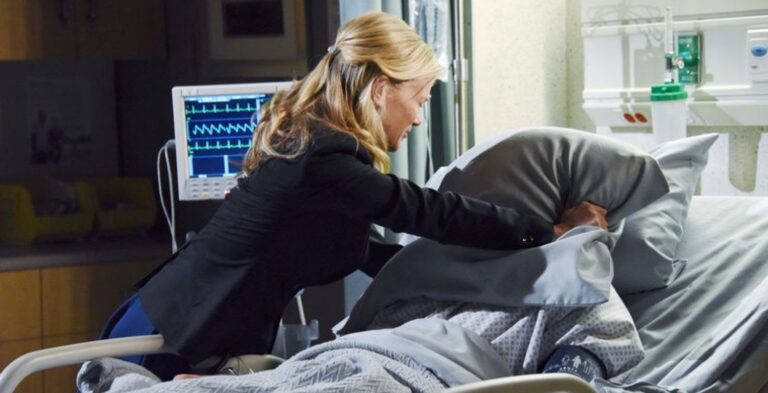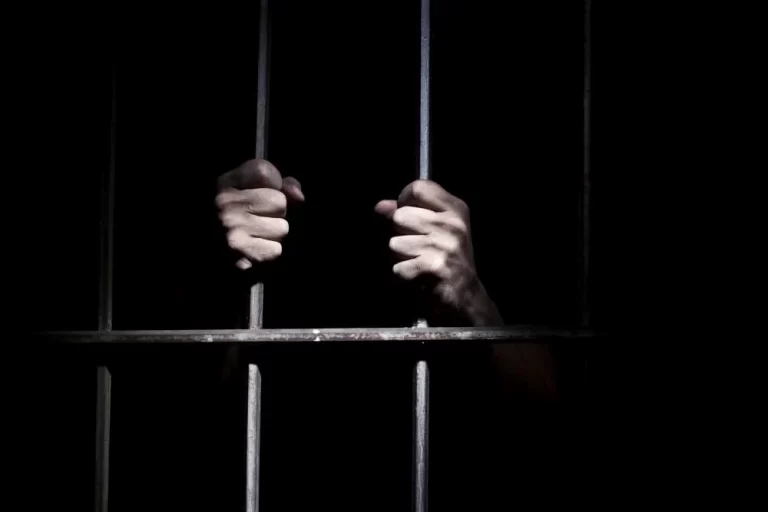Beyond Reasonable Doubt Meaning
Table of Contents
The criminal justice system cannot function to allow fair trials unless those deciding whether an offence has been committed understand that they need to apply the highest standard of proof when considering the evidence presented to them. It is also important that the public understand the basic principles of criminal law so they can hold accountable those politicians who attempt to undermine the system and attack individual liberty. The following description relies on what courts have said, and it highlights the essential points that need to be considered when proof beyond reasonable doubt is being applied.
Foundation of the System
The criminal laws in common law countries like Australia require that the prosecution bring an accusation that a criminal offence has been committed. The procedure then involves an adversarial approach where an accused can oppose their accuser. It is the duty of the prosecution to prove the guilt of an accused person: described as the ‘one golden thread’ in the ‘web of the English Criminal Law’.[i] The onus (often called the burden) of establishing guilt is to the standard of beyond reasonable doubt and it stays immovably with the prosecution throughout a trial, an accused person does not have to do anything.
The Evidence Act 1995 incorporates the common law criminal standard of proof. Section 141(1) of the Act states:
Criminal proceedings: standard of proof
(1) In a criminal proceeding, the court is not to find the case of the prosecution proved unless it is satisfied that it has been proved beyond reasonable doubt.
At the end of the trial, it is for the jury, or a judge if sitting alone, to determine if the prosecution has proved its case beyond reasonable doubt. Those determining whether an offence has been committed are called the tribunal of fact. The presiding judge will often provide written directions on the law to assist the jury to understand the law, and these include the onus and standard of proof. Where a judge is sitting with a jury the tribunal of fact is the jury alone.
When applying the standard of beyond reasonable doubt there is no middle ground and compromise verdicts[ii] are not permitted.
The system as it is applied today is only of relatively recent origin. For example, it was not until 1898 that prisoners were allowed to give sworn testimony, and substantive acceptance of cross examination was allowed, and representation of an accused took all of the 19th Century to develop.[iii] Further, it was not until The Trials for Felony Act 1836 that the common law of England recognized the right of a person to be defended by counsel, and it was not until 1992 that the High Court of Australia recognised that courts had power to stay proceeding where a person was charged with a serious offence and legal representation of an accused was essential to a fair trial.[iv]
Presumption of Innocence
Throughout a trial an accused is presumed to be innocent. The standard direction given to a jury is, ‘a person charged with a criminal offence is presumed to be innocent unless and until the Crown persuades a jury that the person is guilty beyond reasonable doubt’.[v] The presumption is found in the English common law and has grown to be accepted as a necessary part of pre-trial and trial procedure. In Woolmington v DPP, Viscount Sankey LC states:
If at any period of a trial it was permissible for the judge to rule that the prosecution had established its case and that the onus was shifted on the prisoner to prove that he was not guilty and that unless he discharged that onus the prosecution was entitled to succeed, it would be enabling the judge in such a case to say that the jury must in law find the prisoner guilty and so make the judge decide the case and not the jury, which is not the common law.[vi]
The presumption of innocence stays with an accused until such time as a tribunal of fact finds the accused guilty; this is said to have the effect of maintaining the burden of proof with the prosecution throughout the trial.
The presumption of innocence is often promoted by politicians, especially when they are asked to comment on the alleged criminal behaviour of one of their colleagues.[vii]
Understanding Beyond Reasonable Doubt
In leading cases where the term ‘beyond reasonable doubt’ is considered judges warn that it is understood and does not need explanation. The High Court in Green v. The Queen[viii] cited previous cases to establish the point. The following cases were referred to that approved the idea that beyond reasonable doubt was understood and that it would be dangerous to define it:
Sir Owen Dixon in Dawson v. The Queen [1961] HCA 74; (1961) 106 CLR 1, at p 18 said of a summing up in a criminal trial upon the onus of proof that in his view :
“. . . it is a mistake to depart from the time-honoured formula. It is, I think, used by ordinary people and is understood well enough by the average man in the community. The attempts to substitute other expressions, of which there have been many examples not only here but in England, have never prospered. It is wise as well as proper to avoid such expressions.”
His Honour referred in this connexion to Thomas v. The Queen [1960] HCA 2; (1960) 102 CLR 584.
In Brown v. The King [1913] HCA 70; (1913) 17 CLR 570, at p 584 Barton A.C.J. in reference to the traditional formula said :
“I fully recognize that one embarks on a dangerous sea if he attempts to define with precision a term which is in ordinary and common use with relation to this subject matter, and which is usually stated to a jury . . . as a well understood expression.”
McTiernan J., in Thomas v. The Queen (1960) 102 CLR, at p 587, observe “But there is danger in venturing upon a novel elucidation of this principle of the criminal law” i.e. of proof beyond reasonable doubt.
Kitto J. in the same case said (1960) 102 CLR, at p 595:
“Whether a doubt is reasonable is for the jury to say; and the danger that invests an attempt to explain what ‘reasonable’ means is that the attempt not only may prove unhelpful but may obscure the vital point that the accused must be given the benefit of any doubt which the jury considers reasonable.”
Further, Windeyer J. pointed out (1960) 102 CLR, at pp 604-605:
“Attempts by paraphrase and embellishment to explain to juries what is meant by satisfaction beyond reasonable doubt are not always helpful. And explanation is not always necessary . . . It is said that it (‘the time-honoured expression’) ‘was invented by the common-law judges for the very reason that it was capable of being understood and applied by men in the jury box’ . . . The expression proof beyond a doubt conveys a meaning without lawyers’ elaborations.”
A similar mandate can be found in the High Court case of La Fontaine v R when Gibbs J stated:
This Court has not infrequently warned trial judges of the dangers of endeavouring to explain the traditional expression “beyond reasonable doubt”, which, speaking generally, is well understood and needs no explanation.[ix]
In more recent times the High Court in The Queen v Dookheea[x] followed Green and La Fontaine. The Court stated:
. . . as was stated in Green and has since been appreciated in decisions on this point by most Australian intermediate courts of criminal appeal (including in previous decisions in Victoria), a reasonable doubt is a doubt which the jury as a reasonable jury considers to be reasonable (albeit, of course, that different jurors might have different reasons for their own reasonable doubt). Phillips JA accurately summarised the position in R v Chatzidimitriou (2000) 1 VR 493 at 498 [11]:
“the test remains one of reasonable doubt, not of any doubt at all; and … the jury’s function includes determining what is reasonable doubt – or to put that in more concrete fashion, whether the doubt which is left (if any) is reasonable doubt or not.” (emphasis in original)
The High Court in Dookheea suggested, ‘it is generally speaking undesirable for a trial judge to direct a jury in terms which contrast proof beyond reasonable doubt with proof beyond any doubt’.[xi] But that it depends on the circumstance of the case.[xii]
The Court approved the practice of contrasting proof beyond reasonable doubt with the lower civil standard of proof. It stated:
the practice ordinarily followed in Victoria, as it was in this case, and often followed in New South Wales, includes contrasting the standard of proof beyond reasonable doubt with the lower civil standard of proof on the balance of probabilities. That practice is to be encouraged. It is an effective means of conveying to a jury that being satisfied of guilt beyond reasonable doubt does not simply mean concluding that the accused may have committed the offence charged or even that it is more likely than not that the accused committed the offence charged. What is required is a much higher standard of satisfaction, the highest known to the law: proof beyond reasonable doubt.[xiii]
Whilst its meaning is asserted to be clear buy the courts, assistance should be provided by the judicial officer presiding in a trial by excluding evidence that is not relevant or, amongst other admissibility factors, where its probative value is outweighed by its prejudicial effect. The adversarial system requires both the prosecution and the defence to assist the court to determine what is admissible.
Essential Elements of Offence
The requirement in most cases is that only the essential elements of the alleged offence need to be proved beyond reasonable doubt.
For example, in a case of murder the essential elements of the offence that need to be proved beyond reasonable doubt are:
- That the accused intentionally caused the death; or
- Intended to cause grievous bodily harm; or
- Did the act which caused the death with reckless indifference to human life.
- The cause of death where that is an issue.
Reasonable Possibility
There are a number of principles that need to be considered in order for beyond reasonable doubt to be properly applied. The first and probably the most important is that when considering the prosecution case, it is necessary for the tribunal of fact to determine if there is evidence showing a reasonable possibility that the accused did not commit the offence alleged. This requirement is also expressed as a hypothesis consistent with innocence or inconsistent with guilt. This is a significant requirement that is sometimes overlooked. If there is a reasonable possibility consistent with innocence, then the prosecution must exclude (negative) that reasonable possibility. In other words, the onus remains on the prosecution to exclude it, the onus of proof does not shift to the accused. The evidence supporting the hypothesis can arise in the prosecution case or the defence case. If there is a reasonable possibility consistent with innocence and the prosecution has not excluded it then there is a reasonable doubt. The requirement that the prosecution must negative a reasonable possibility consistent with innocence was most recently reaffirmed by the High Court in Pell v The Queen.[xiv]
The possibilities cannot be fanciful or farfetched, and proof beyond reasonable doubt involves rejection of all reasonable hypotheses or any reasonable possibility inconsistent with the prosecution case.[xv] If, during an address to the jury when prosecution and defence cases have closed, counsel suggests fantastic or unreal possibilities the judge can instruct the jury that such possibilities ought not to be regarded as a source of reasonable doubt.[xvi]
If written directions are provided to the jury, it is essential that the directions make clear that the legal onus is on the Crown to eliminate any reasonable possibility.[xvii]
Accused Evidence
Where an accused gives evidence the judge needs to instruct those deciding whether the prosecution has proved the case beyond reasonable doubt that they must apply the following: first, if the evidence is believed, then the requirement is that the person be acquitted; second, if the jury or judge alone is having difficulty believing the accused’s evidence, but thinks it might be true, then the requirement is to acquit; and third, if the accused’s evidence is not believed at all, then it must be put to one side. The requirement remains with the prosecution to prove its case beyond reasonable doubt.[xviii]
The High Court has held that where an accused does not give evidence on oath but has given a record of interview, and where there is a real risk that the answers in the record of interview can only give rise to a reasonable doubt if the jury believe them, or they could prefer the evidence of a complainant then the jury should be directed as if the accused had given evidence on oath.[xix] That is as stated above:
- If the evidence is believed, then the requirement is that the person be acquitted.
- If the jury or judge alone is having difficulty believing the accused’s evidence, but thinks it might be true, then the requirement is to acquit.
- If the accused’s evidence is not believed at all, then it must be put to one side, and the focus must be on whether the prosecution can prove its case beyond reasonable doubt.
Circumstantial Evidence and Beyond Reasonable Doubt
The long-established principle that the prosecution needs to exclude reasonable possibility consistent with innocence for a finding of guilt beyond reasonable doubt applies in circumstantial evidence cases along with the requirement that for guilt to be found the only rational inference must be the one promoted by the prosecution. Additionally, where the prosecution case relies on one or more facts that are fundamental to the process of reasoning to the guilt of the accused then those fact or facts need to be proved beyond reasonable doubt.[xx]
Evidence and Direction Failures
The prosecution opens its case by outlining the evidence it proposes to call to prove the accused committed the offence. During this process the prosecution theory of the case is advanced. For example, the accused committed premeditated murder because he hated the deceased. In most criminal cases, a jury can distinguish between the reasonable theory of a case promoted by the prosecution and the improbable. However, the improbable can become accepted through the use of evidence that should not apply to the circumstances; is misleading; is false; the jury is biased; or the judge has misdirected on the law. In such cases miscarriages of justice can occur because the standard of beyond reasonable doubt is not sufficient to stop unwarranted or unreasonable convictions.
Another problem arises where speculation or suspicion form part of the decision making process. In such cases, beyond reasonable doubt is not being considered, instead it has collapsed under the weight of stupidity.
[i] Woolmington v DPP [1935] AC 462, 481.
[ii] This involves one or more jury members giving way to others to avoid not being able to reach a unanimous verdict. Put bluntly it can involve jurors having a reasonable doubt but simply giving way. Additionally, where there are a number of charges on an indictment or alternative charges, doing a deal.
[iii] J H Baker, An Introduction to English Legal History (Butterworths, 1979) 416 – 418.
[iv] Dietrich v R [1992] HCA 57, 1; (1992) 177 CLR 292.
[v] Judicial Commission of New South Wales, Bench Book, 3-600.
[vi] [1935] AC 462, 480.
[vii] For example, in 2013 then Trade Minister Craig Emerson defended Labor colleague Craig Thompson, who was facing a number of allegations involving corrupt practices as a trade union official. Emerson is reported as saying: ‘Let the investigative processes continue without political interference,’ he told Sky News, adding that Mr Thomson was entitled to the presumption of innocence. ‘There has been no finding of guilt against Mr Thomson.’: Kate McClymont, ‘Craig Thomson arrested by fraud squad’, Sydney Morning Herald, 31 January 2013; www.smh.com.au/federal-politics/political-news/craig-thomson-arrested-by-fraud-squad-20130131-2dmnn.html. This is but one example of dozens that can be found in newspaper reports and parliamentary hansards.
[viii] [1971] HCA 55, 6-11; (1971) 126 CLR 28
[ix] [1976] HCA 52, 10; (1976) 136 CLR 62.
[x] [2017] HCA 36, 28.
[xi] Ibid 1.
[xii] Ibid.
[xiii] Ibid [41].
[xiv] (2020) 268 CLR 123 [42].
[xv] See Moore v R [2016] NSWCCA 185
[xvi] See Keil v The Queen (1979) 53 ALJR 525.
[xvii] Hadchiti v R (2016) 93 NSWLR 671, [106], [112]
[xviii] See Liberato v R [1985] HCA 66.
[xix] De Silva v The Queen [2019] HCA 48, [11].
[xx] The Queen v Baden-Clay [2016] HCA 35.






